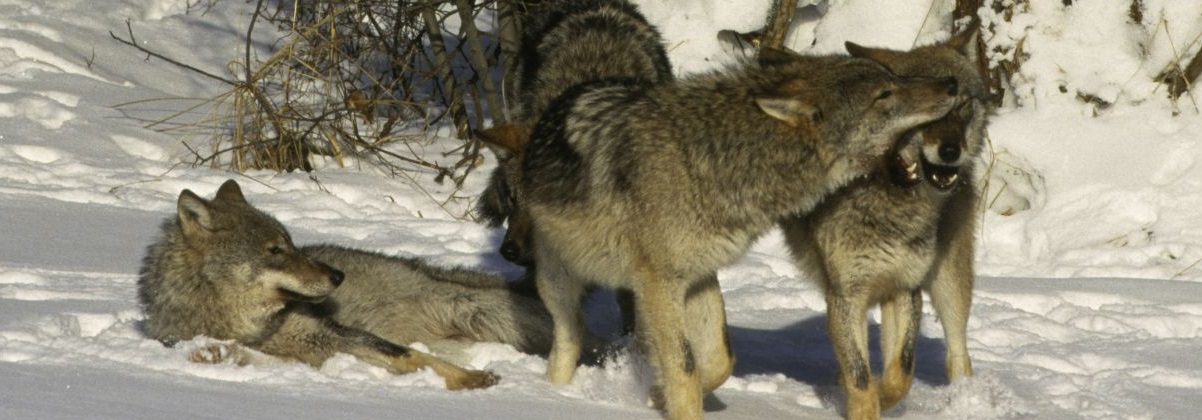Wolf
Canis lupus
Together with the lynx and the brown bear, the wolf belongs to native species of our mammalian fauna, which occurred in historical times throughout the territory of the Czech Republic. However, due to gradual deforestation of the landscape, settlement expansion and primarily due to direct persecution by man, this species was gradually exterminated at the turn of the 19th and 20th centuries not only in the Czech Republic, but also almost in the entire Central Europe. In recent decades, the wolf has again returned to our territory.
The wolf performs an important regulatory, selection and perhaps even sanitary function in forest ecosystems in populations of wild ungulates or game animals. By doing that, it directly influences the state of the forest and maintains its natural balance. However, the wolf at the same time causes damage to poorly secured livestock, which brings it into conflict with farming and economic interests of humans.
This problem has been partially solved since 2000 by Act No. 115/2000 Coll., on Compensation of Damages Caused by Selected Specially Protected Fauna Species, but it is not a completely sufficient solution. State nature conservation authorities have therefore prepared Management Plan for the Wolf, which focuses on solving conflicts related to the return of the wolf to our landscape. To its main objectives belong, in particular, introducing a functioning system of providing funds for actual implementation of preventive measures in order to protect herds, and implementing a functioning system for the investigation of damages and for payment of compensations for damages caused by wolves to livestock. It further focuses on establishing other measures that should ensure the possibility of wolves and humans coexisting together in today's cultural landscape – for example introducing a unified monitoring system or establishing a clear procedure in the event of a problematic individual occerrence. An important part of the Management Plan for the Wolf is also the definition of so-called favourable conservation status of the species under the Habitats Directive (Council Directive 92/43/EEC on the conservation of natural habitats and of wild fauna and flora) in cooperation with neighbouring countries (Germany, Poland).

